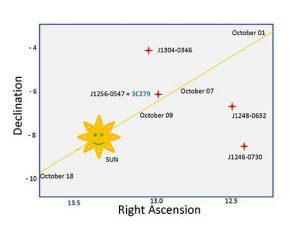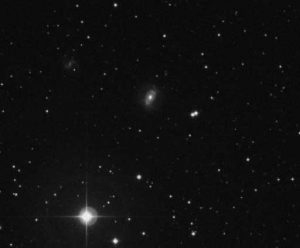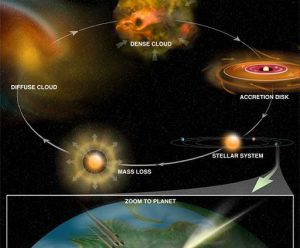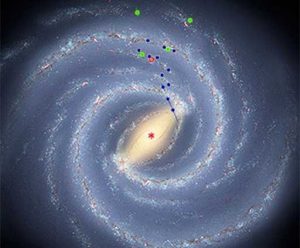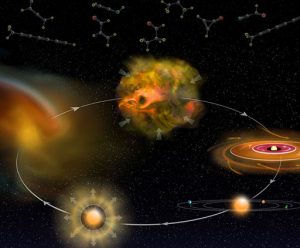Scientists using a continent-wide array of radio telescopes have made an extremely precise measurement of the curvature of space caused by the Sun’s gravity, and their technique promises a major contribution to a frontier area of basic physics.
Unraveling Dark Energy Mystery
Radio astronomers have directly measured the distance to a faraway galaxy, providing a valuable yardstick for calibrating large astronomical distances and demonstrating a vital method that could help determine the elusive nature of the mysterious Dark Energy that pervades the Universe.
Astronomers Unveiling Life’s Cosmic Origins
Processes that laid the foundation for life on Earth — star and planet formation and the production of complex organic molecules in interstellar space — are yielding their secrets to astronomers armed with powerful new research tools, and even better tools soon will be available.
Milky Way a Swifter Spinner, More Massive
Fasten your seat belts — we’re faster, heavier, and more likely to collide than we thought. Astronomers making high-precision measurements of the Milky Way say our home Galaxy is rotating about 100,000 miles per hour faster than previously understood.
Astronomers Find Most Distant Water in the Universe
Astronomers have found the most distant water yet seen in the Universe, in a galaxy more than 11 billion light-years from Earth.
Center for Chemistry of the Universe
A new research center combining the tools of chemistry and astronomy will use the unique laboratory of interstellar space to free the study of basic chemistry from the restrictive bonds of Earth.






